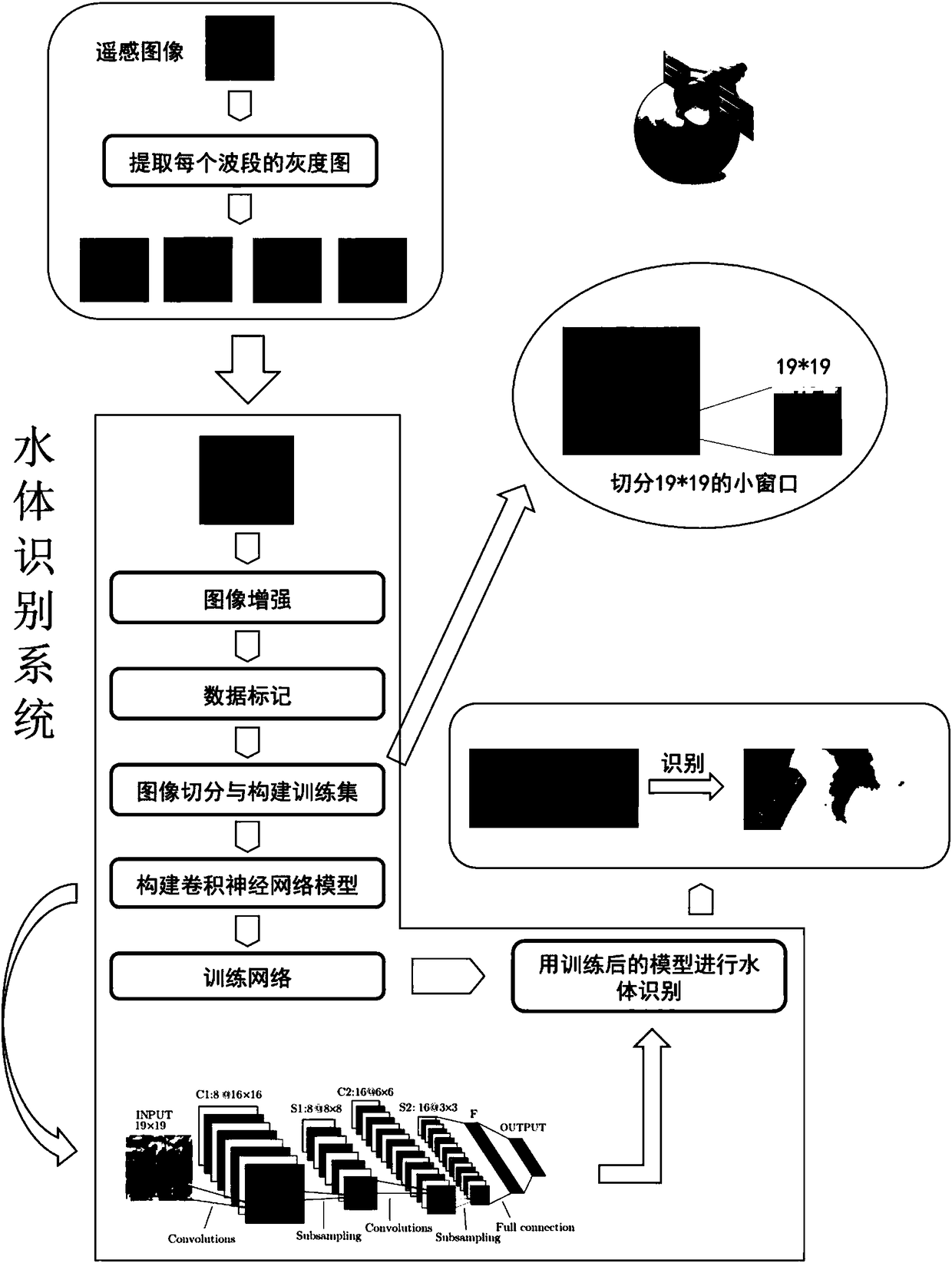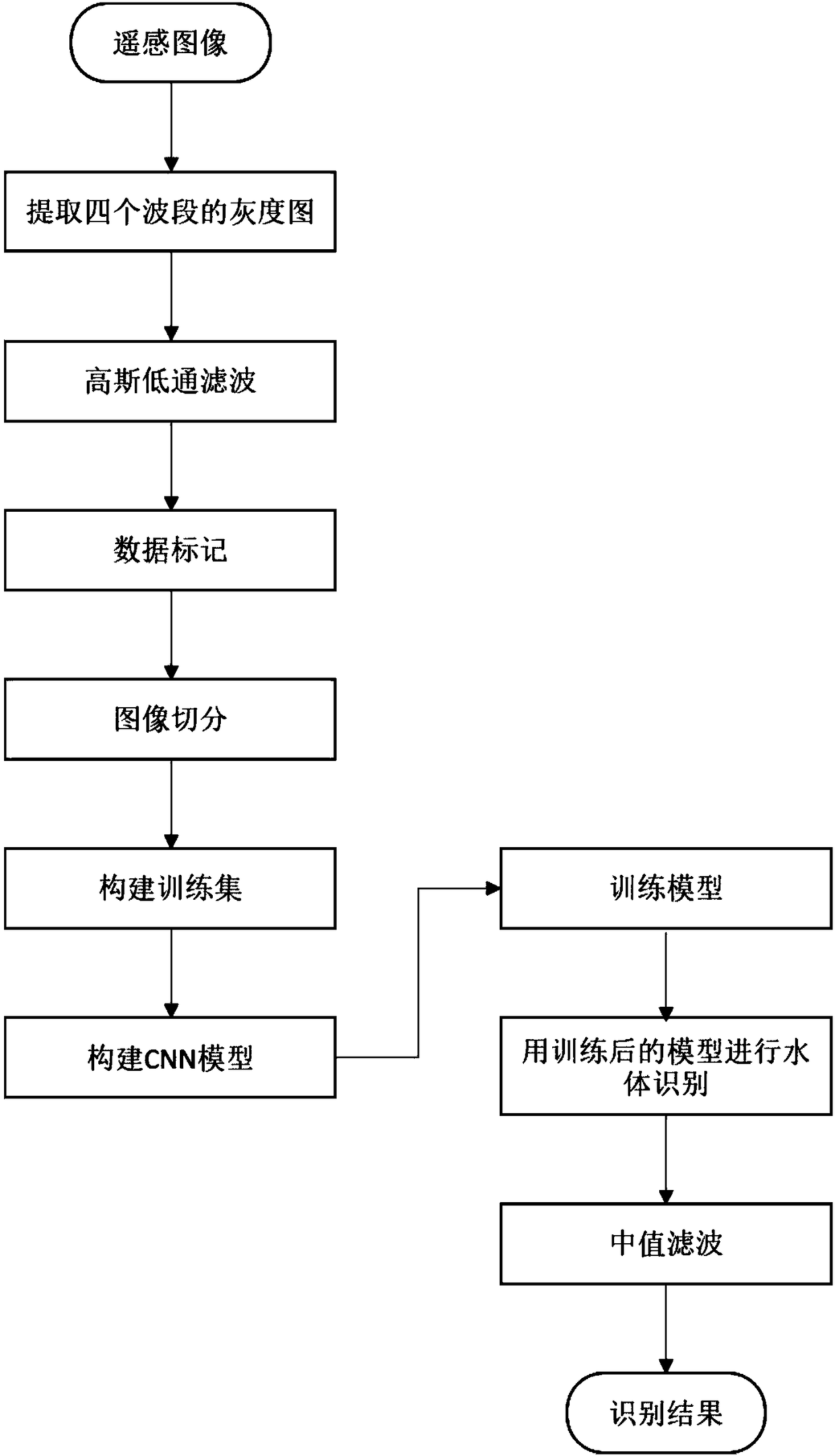Water recognition method based on high resolution remote sensing images
An identification method and high-resolution technology, applied in the field of water identification based on high-resolution remote sensing images, can solve the problems of high water identification accuracy, difficulties in remote sensing images, and imaging effects of remote sensing images, and avoid feature extraction and data duplication. structure, the effect of high result accuracy
- Summary
- Abstract
- Description
- Claims
- Application Information
AI Technical Summary
Problems solved by technology
Method used
Image
Examples
Embodiment Construction
[0031] In order to describe the present invention more specifically, the technical solutions of the present invention will be described in detail below in conjunction with the accompanying drawings and specific embodiments.
[0032] Such as figure 1 and figure 2 Shown, the present invention is based on the water body identification method of high-resolution remote sensing image, comprises the following steps:
[0033] (1) Image enhancement.
[0034] In order to highlight the edge of the image and enhance the difference between water and land, it is first necessary to perform image enhancement on the remote sensing image. The specific steps are as follows:
[0035] 1.1 Select a high-resolution satellite image with obvious resolution of water body and land, and read all four bands of the image in the form of grayscale image.
[0036] 1.2 Select a 7×7 mask, and use Gaussian low-pass filtering to enhance and denoise each band of the image.
[0037] The Gaussian filter is a ki...
PUM
 Login to View More
Login to View More Abstract
Description
Claims
Application Information
 Login to View More
Login to View More - R&D
- Intellectual Property
- Life Sciences
- Materials
- Tech Scout
- Unparalleled Data Quality
- Higher Quality Content
- 60% Fewer Hallucinations
Browse by: Latest US Patents, China's latest patents, Technical Efficacy Thesaurus, Application Domain, Technology Topic, Popular Technical Reports.
© 2025 PatSnap. All rights reserved.Legal|Privacy policy|Modern Slavery Act Transparency Statement|Sitemap|About US| Contact US: help@patsnap.com



